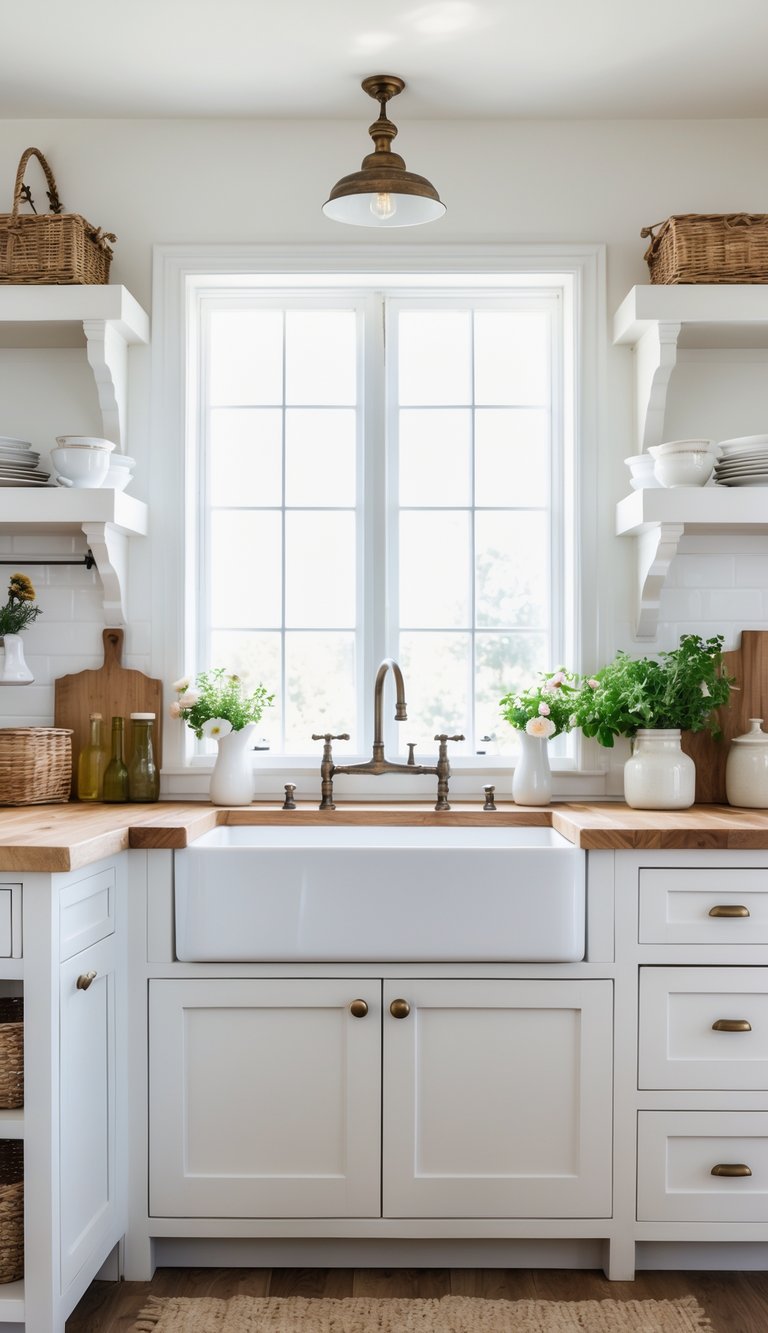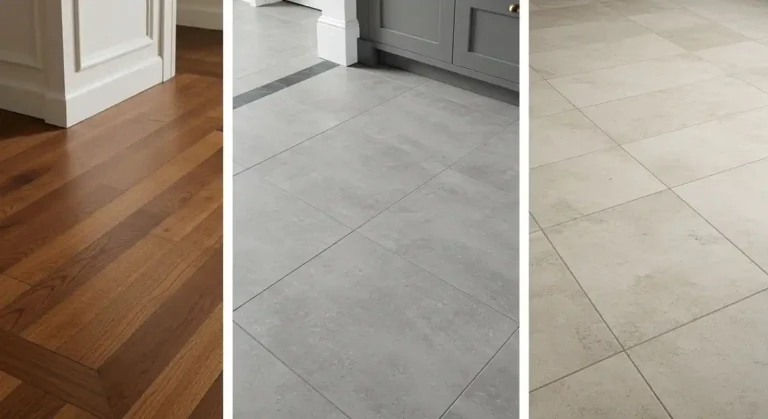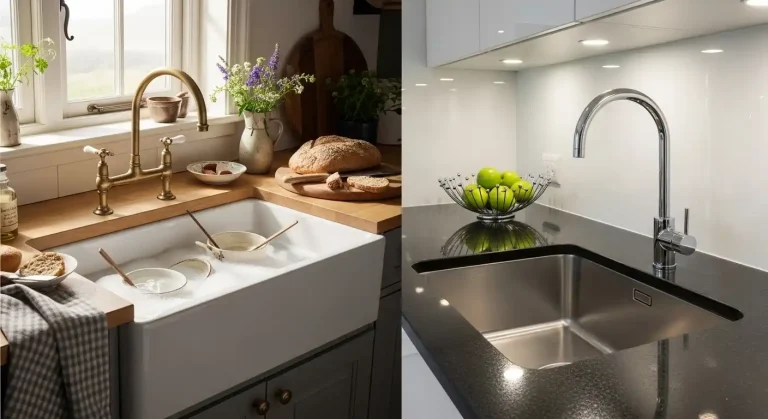Vinyl vs. Laminate Kitchen Flooring: Which One Lasts Longer?
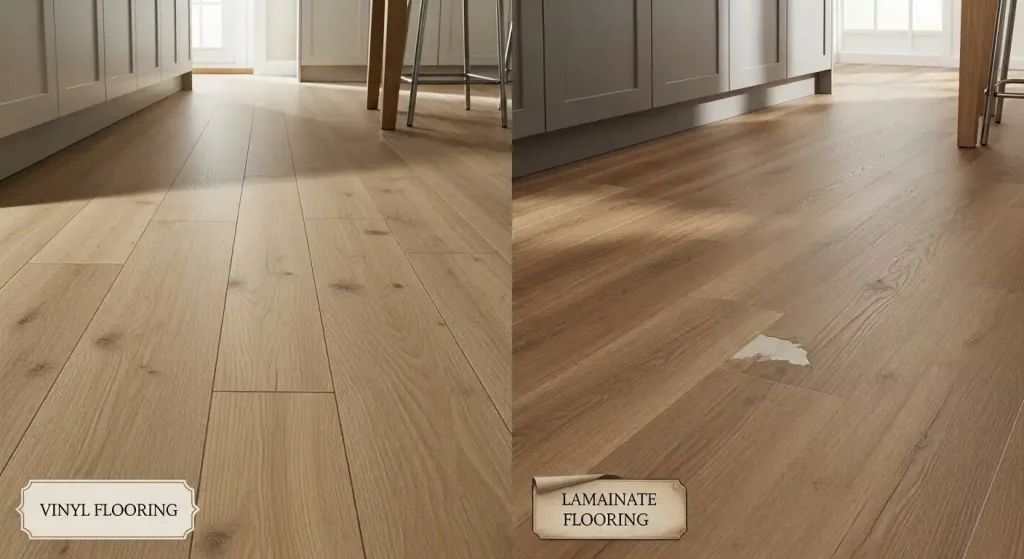
When it comes to choosing the right flooring for your kitchen, durability is usually at the top of the list.
The kitchen is one of the busiest rooms in the home, with constant foot traffic, spills, and daily wear and tear.
That’s why many homeowners find themselves comparing vinyl vs. laminate kitchen flooring.
Both materials are popular, affordable, and stylish—but which one truly lasts longer in a kitchen setting? Let’s dive into the details to help you make the best decision for your home.
🍁🎃 Fall Finds & Seasonal Savings on Amazon !
Don’t miss out on the best discounts and top-rated products available right now!
*As an Amazon Associate, I earn from qualifying purchases.
Understanding Vinyl Kitchen Flooring
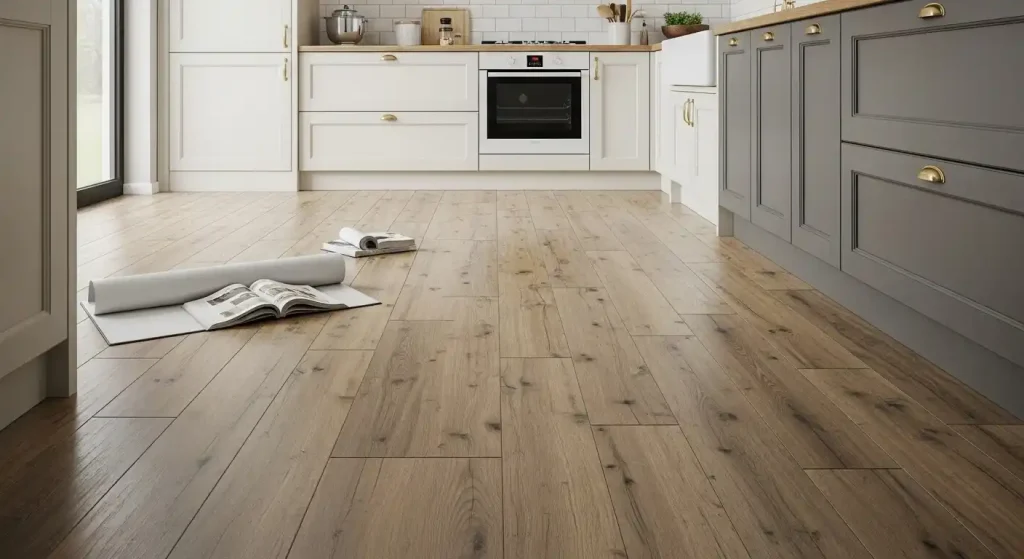
Vinyl flooring has come a long way from the sheet vinyl of decades past.
Today, luxury vinyl plank (LVP) and luxury vinyl tile (LVT) dominate the market.
These options mimic the look of wood, stone, or tile while offering impressive durability.
Vinyl is made from synthetic materials, primarily PVC, which makes it highly resistant to water and stains.
This is a major reason why vinyl has become a go-to choice for kitchens, bathrooms, and laundry rooms.
If you’re looking for inspiration, check out these kitchen vinyl plank flooring ideas to see how versatile this material can be.
Understanding Laminate Kitchen Flooring
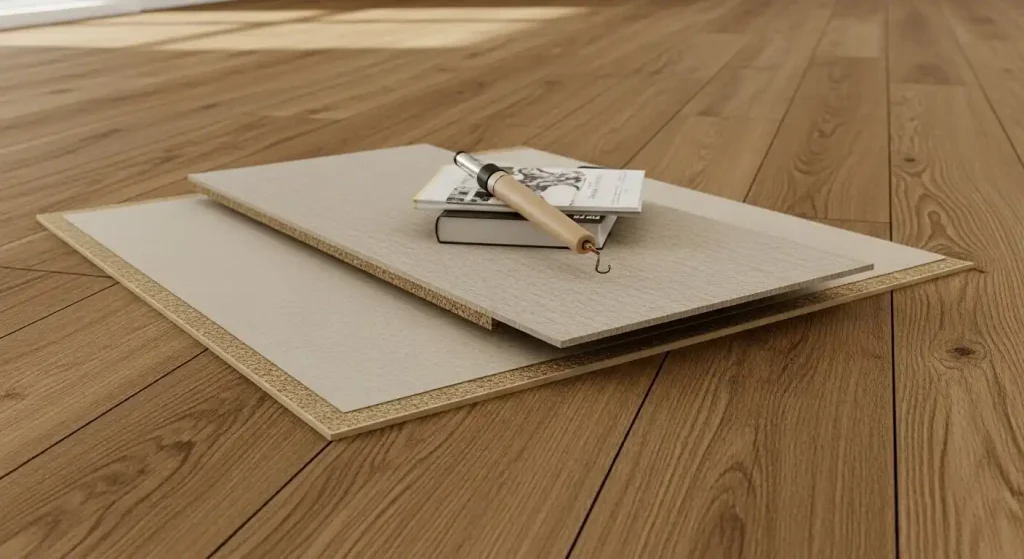
Laminate flooring is another budget-friendly option that mimics natural wood or stone.
It’s made of a fiberboard core topped with a photographic image layer and a protective wear layer.
Laminate is known for its scratch resistance and realistic wood-like appearance, which makes it appealing for open-concept homes where style continuity matters.
However, laminate is not as water-resistant as vinyl, which can be a drawback in kitchens.
To see how laminate can transform your space, explore kitchen laminate flooring ideas for practical and stylish design options.
Durability: Vinyl vs. Laminate Kitchen Flooring
When comparing the two, durability is often the deciding factor.
- Vinyl flooring is highly resistant to water, scratches, and dents. It’s also softer underfoot, which means it can handle dropped dishes or heavy traffic without showing damage as quickly. According to Consumer Reports, vinyl often outperforms laminate in terms of impact resistance and overall toughness (source: Consumer Reports).
- Laminate flooring is scratch-resistant and holds up well to heavy furniture, but it struggles with moisture. If water seeps into the seams, the fiberboard core can swell and warp. Even though newer waterproof laminates exist, vinyl still edges out laminate in kitchens where spills are common.
Lifespan: Which Lasts Longer?
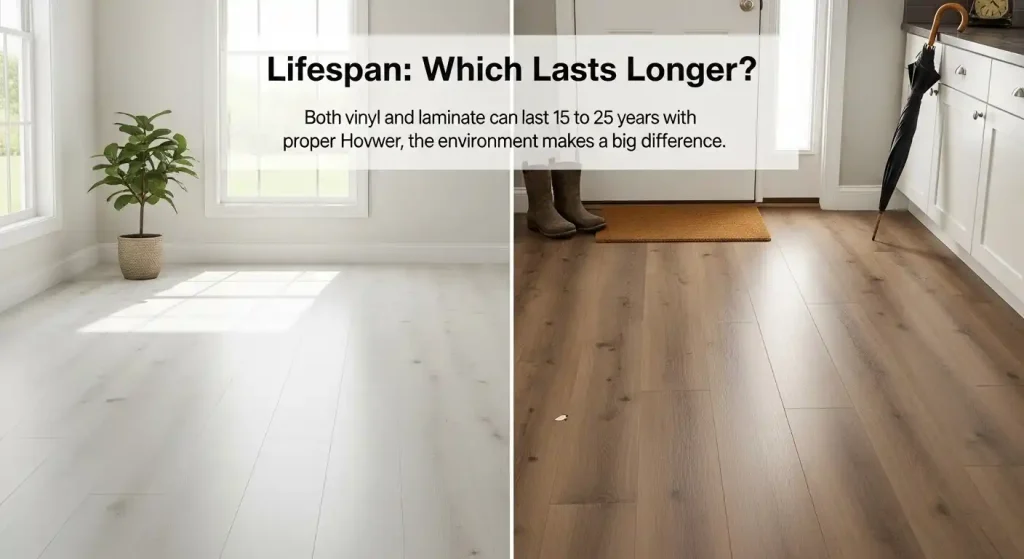
Both vinyl and laminate can last 15 to 25 years with proper care. However, the environment makes a big difference.
- Vinyl flooring typically lasts longer in kitchens because of its waterproof nature. It won’t warp or swell if you spill water, drop ice, or have a leaky dishwasher. With good maintenance, vinyl can easily outlast laminate in moisture-prone spaces.
- Laminate flooring can last just as long in dry areas, but in kitchens, its lifespan often shortens due to water exposure. Even a small unnoticed spill can reduce the floor’s longevity.
In short: if longevity in a kitchen is your top priority, vinyl is the winner.
🍁🎃 Fall Finds & Seasonal Savings on Amazon !
Don’t miss out on the best discounts and top-rated products available right now!
*As an Amazon Associate, I earn from qualifying purchases.
Water Resistance: A Critical Factor in Kitchens
Water resistance is where vinyl shines. Luxury vinyl planks are completely waterproof, making them ideal for kitchens where spills are inevitable.
Laminate, on the other hand, is water-resistant at best. Even waterproof laminate options can’t match vinyl’s resilience.
If you live in a busy household with kids or pets, vinyl will give you peace of mind.
For extra tips on handling spills, you might also like our guide on how to clean an oil spill in your kitchen floor.
Comfort and Feel Underfoot
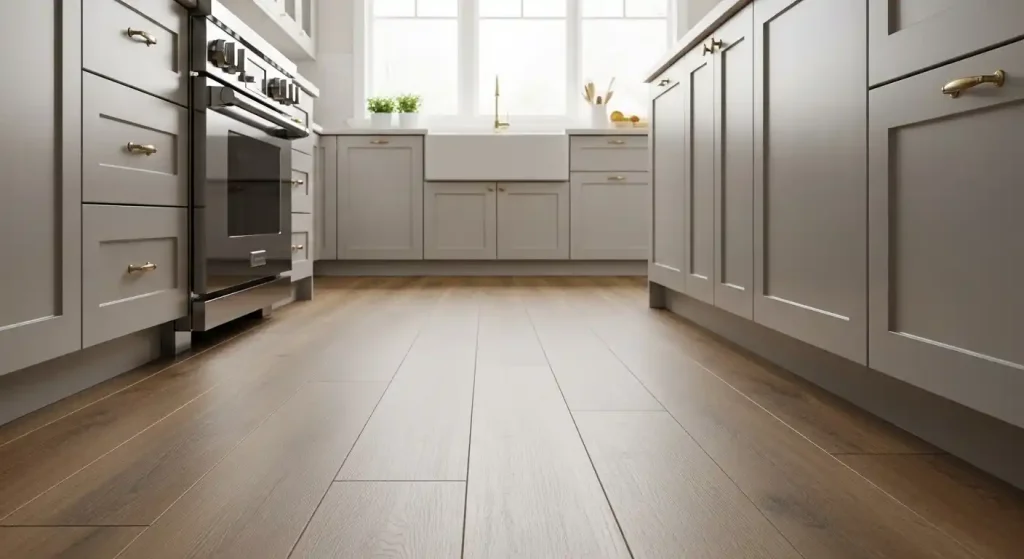
Comfort matters in the kitchen, where you may spend hours cooking or entertaining.
- Vinyl flooring has a softer, slightly cushioned feel. It’s easier on your joints and more forgiving if you drop a dish.
- Laminate flooring is harder underfoot, similar to hardwood. While durable, it may not be as comfortable for long cooking sessions.
If you spend lots of time standing in your kitchen, vinyl may be the more comfortable choice.
Maintenance and Cleaning
Both vinyl and laminate are easy to maintain, but vinyl is simpler.
- Vinyl can be cleaned with a damp mop and mild cleaner. It doesn’t require special products and isn’t damaged by water.
- Laminate should be cleaned with a dry or slightly damp mop. Excess water can seep into seams and cause swelling.
For more cleaning tips, see our guide on how to clean kitchen floor tiles.
Cost Comparison
Budget is always a factor.
- Vinyl flooring typically ranges from $2 to $7 per square foot, depending on quality and style.
- Laminate flooring falls in a similar range, $1.50 to $5 per square foot.
Installation costs are also comparable, though vinyl can sometimes be easier to install due to its click-lock or peel-and-stick options.
Style and Design Options
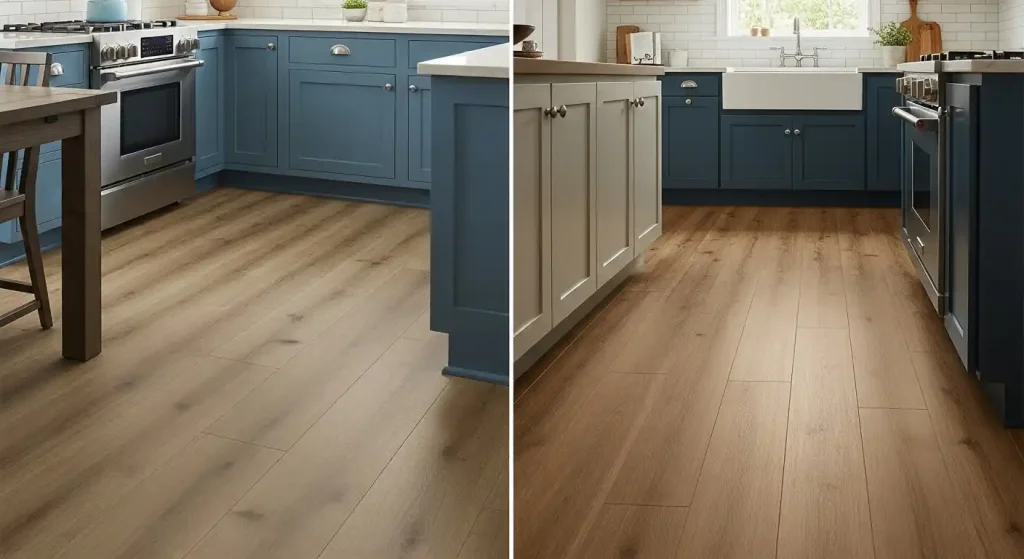
Both flooring types offer a wide variety of design choices.
- Vinyl can replicate wood, stone, or tile with remarkable realism. It also comes in a variety of finishes—matte, textured, or glossy. This makes it easy to pair with different cabinet and wall colors. For example, vinyl flooring looks stunning with kitchen cabinet color ideas with blue walls or even earthy tones found in farmhouse kitchen colors.
- Laminate also offers realistic wood looks, often with embossed textures that mimic natural grain. It’s a great choice if you want a cohesive look flowing from your living room into your kitchen. Pair laminate with earthy kitchen color ideas for a warm, grounded design.
Eco-Friendliness
If sustainability matters to you, laminate has a slight edge. It’s made from wood byproducts and is often more eco-friendly than vinyl, which is fully synthetic.
🍁🎃 Fall Finds & Seasonal Savings on Amazon !
Don’t miss out on the best discounts and top-rated products available right now!
*As an Amazon Associate, I earn from qualifying purchases.
However, vinyl is improving in this area, with some manufacturers offering recyclable options.
If eco-conscious design is important, you may also enjoy exploring eco-friendly kitchen flooring ideas.
When to Choose Vinyl Flooring
Choose vinyl if:
- You want maximum water resistance.
- Your kitchen sees heavy traffic and frequent spills.
- Comfort underfoot is a priority.
- You want a long-lasting solution with minimal maintenance.
For inspiration, browse kitchen vinyl tiles flooring ideas to see how vinyl can elevate your design.
When to Choose Laminate Flooring
Choose laminate if:
- You love the authentic wood look.
- Your kitchen is rarely exposed to standing water.
- You want a budget-friendly option that flows seamlessly into other rooms.
- Eco-friendliness is a priority.
Pair laminate with small dining room design ideas to create a cozy, stylish space that feels cohesive.
Blending Flooring with Kitchen Design
Flooring is just one part of your kitchen’s overall design. The right pairing of floors, cabinets, and wall colors can completely transform the space.
For example:
- Dark laminate floors look striking with kitchen cabinet color ideas with black appliances.
- Warm vinyl planks complement earthy neutrals farmhouse kitchen color schemes.
- Light laminate floors can brighten up compact layouts, especially when combined with space-saving kitchen layout ideas.
Your flooring choice should not only last but also enhance the style you’re aiming for.
Final Verdict: Vinyl vs. Laminate Kitchen Flooring
So, which one lasts longer?
In most kitchens, vinyl flooring outlasts laminate because of its waterproof nature and superior durability against spills and stains.
While laminate offers a beautiful wood-like look and performs well in dry spaces, it simply can’t compete with vinyl’s resilience in moisture-prone areas.
🍁🎃 Fall Finds & Seasonal Savings on Amazon !
Don’t miss out on the best discounts and top-rated products available right now!
*As an Amazon Associate, I earn from qualifying purchases.
That said, laminate can still be a great choice if your kitchen rarely sees water exposure and you prefer an eco-friendlier option.
Ultimately, the best flooring for your kitchen depends on your lifestyle, budget, and design preferences.
Whichever you choose, make sure it complements your cabinets, wall colors, and overall kitchen vibe.
Wrapping Up
Choosing between vinyl and laminate doesn’t have to be overwhelming.
By weighing factors like water resistance, durability, comfort, and style, you can find the perfect flooring for your kitchen.
If you’re still exploring design options, take a look at our guides on earthy kitchen flooring ideas and classic kitchen flooring ideas for more inspiration.
Your kitchen floor is more than just a surface—it’s the foundation of your home’s style and functionality.
Pick wisely, and it will serve you well for decades.

